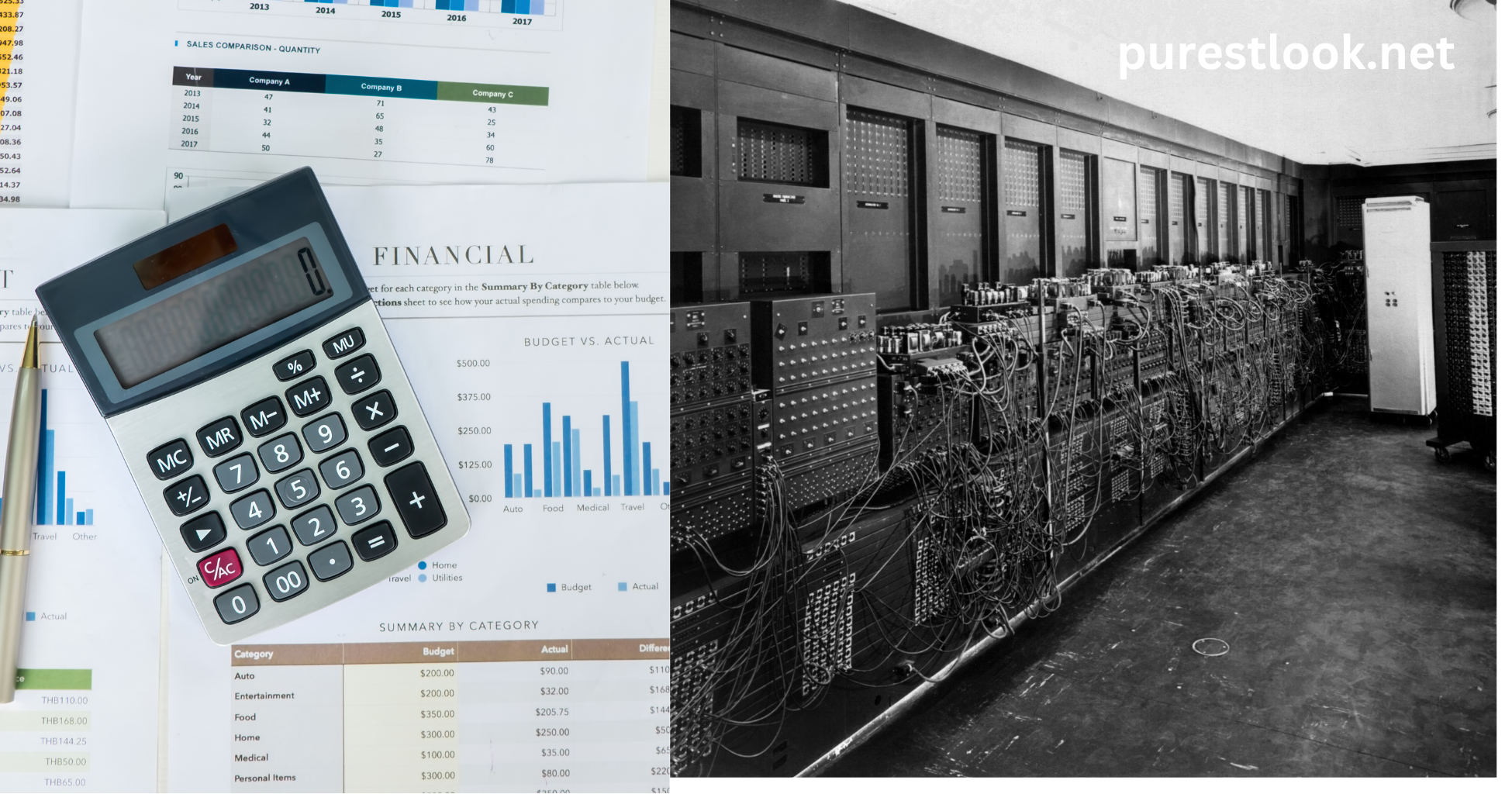Calculators have transformed the way we compute numbers. Today, they fit into our pockets, but in the 1800s, calculators were revolutionary devices that paved the way for modern technology. Let’s dive into the history of calculators from the 1800s, understanding their designs, functionality, and significance in shaping computational tools
The Birth of Calculators in the 1800s
The 1800s was a period of innovation, and early calculators emerged as mechanical devices designed to assist in arithmetic.
The tools invented during this period were mechanical and relied on gears, levers, and manual input to function. Among the most notable was Charles Babbage’s Difference Engine, an invention that set the foundation for modern computing.
Key Calculators of the 1800s
Mechanical calculators of the 19th century include remarkable inventions that helped simplify arithmetic operations.
Charles Babbage’s Difference Engine
Charles Babbage, known as the “Father of the Computer,” designed the Difference Engine in 1822. This mechanical calculator was used for polynomial calculations and had thousands of intricate gears and parts.
Arithmometer by Thomas de Colmar
The Arithmometer, invented in 1820, was the first commercially successful mechanical calculator. It was compact compared to the Difference Engine and became popular for business use.
Table: Comparison of Early Calculators in the 1800s
| Calculator Name | Inventor | Year | Key Features | Usage |
|---|---|---|---|---|
| Difference Engine | Charles Babbage | 1822 | Gears, levers, polynomial math | Scientific computations |
| Arithmometer | Thomas de Colmar | 1820 | Compact, manual crank system | Business and commerce |
How Did 1800s Calculators Work?
Calculators in the 1800s operated through mechanical systems. Users would input numbers using dials or levers, and gears would perform the mathematical operations.
- Manual Input: Numbers were entered manually, typically through a series of dials or cranks.
- Mechanical Output: The answer was displayed through a series of numbered dials or wheels.
- Limited Functions: Early calculators could perform basic arithmetic, such as addition, subtraction, multiplication, and division.
Why Were Calculators Important in the 1800s?
Calculators made it easier to perform complex calculations, reducing errors in manual arithmetic. This was especially useful in industries like engineering, astronomy, and commerce.
Challenges with Early Calculators
Despite their innovations, calculators in the 1800s had limitations.
- Size and Portability: These devices were often large and cumbersome.
- Manual Operation: They required physical effort to operate.
- Complex Maintenance: Mechanical systems were prone to wear and tear.
Conclusion
The calculators of the 1800s marked the beginning of mechanized arithmetic. While primitive compared to today’s technology, these devices were monumental in shaping the path toward modern computing. Understanding their history offers valuable insight into human ingenuity and the relentless pursuit of technological advancement.
FAQs About Early Calculators
What did a calculator look like in the 1800s?
Calculators in the 1800s were mechanical devices made of gears, levers, and cranks, often large and intricate in design.
Who invented the first calculator in the 1800s?
Thomas de Colmar invented the Arithmometer in 1820, considered the first commercially successful calculator.
How did people use calculators in the 1800s?
Users operated calculators manually, inputting numbers via cranks or dials to perform arithmetic operations like addition or multiplication.
What were early calculators made of?
Early calculators were constructed from metal parts like gears, levers, and wheels, with wooden or brass housing for support.
Why are 1800s calculators significant?
They were the foundation for modern computing, demonstrating early innovations in mechanized problem-solving.
